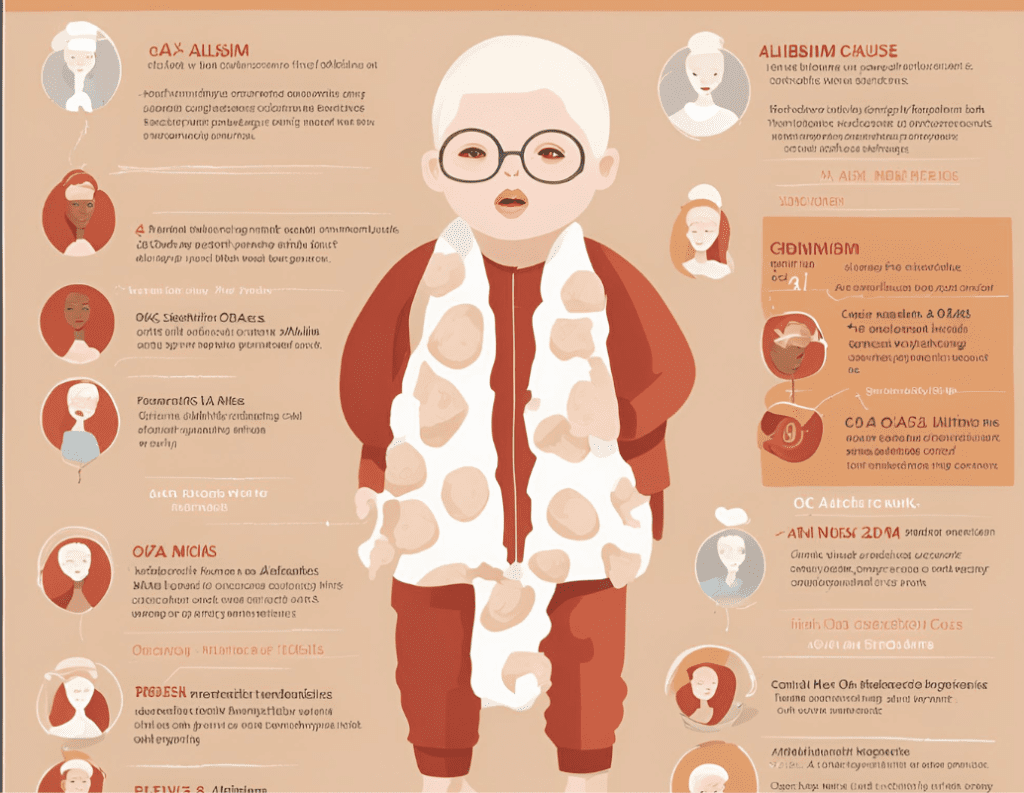Albinism is a rare genetic condition that results in a lack of melanin, the pigment responsible for the color of our skin, hair, and eyes. The absence or limited production of melanin leads to distinct physical features that can be striking and noticeable, such as lighter skin, hair, and eye color. While it can affect people from all racial and ethnic backgrounds, it takes on unique characteristics when it appears in black individuals.
In this article, we’ll explore what causes albinism, how it’s inherited, and address some of the most common questions and topics like, “Can an albino black person have an albino child?”, “What is black albino called?”, and “Can two white parents have an albino child?” will also be discussed.
What Is Albinism?
At its core, it is a genetic disorder where a person’s body doesn’t produce enough melanin, the pigment responsible for giving color to the skin, hair, and eyes. Melanin plays a crucial role in protecting the body from UV rays, which is why people often experience greater sensitivity to the sun.
It can manifest in several ways. Individuals with the condition often have light or very pale skin, light or even white hair, and light-colored eyes. The presence of albinism is typically noticed at birth and persists throughout life. While in black people is similar to any other ethnicity, the condition can be more visually apparent due to the contrast between their typically darker skin tone and the absence of melanin.
The Genetic Cause
The cause of albinism lies in genetic mutations that affect the production of melanin. There are multiple genes responsible for melanin production, and when these genes are altered, melanin synthesis is disrupted, leading to albinism.
The primary genes involved are:
TYR (Tyrosinase Gene): The TYR gene is responsible for producing an enzyme called tyrosinase, which is necessary for melanin production. When mutations occur in this gene, the body can’t produce enough melanin, resulting in a form of albinism called Oculocutaneous Albinism Type 1 (OCA1).
OCA2 (Oculocutaneous Albinism Type 2): This is one of the most common forms. OCA2 mutations impact melanin production but usually leave some pigment intact. In people with OCA2, the skin and hair may be light, but not as pale as in other forms of albinism. This type is the most commonly observed form in individuals of African descent.
OCA3 and OCA4: These types of albinism are rarer but still result from mutations in genes responsible for melanin production.
While albinism is more commonly linked with lighter-skinned individuals, it’s crucial to understand that albinism can affect people of any race. For albino black people, the genetic mutation causes a significant difference in pigmentation, resulting in lighter skin, hair, and eyes compared to their African heritage.

How Is Albinism Inherited?
Albinism is inherited in an autosomal recessive pattern, which means that a person must inherit two copies of the mutated gene—one from each parent—to have the condition. If both parents carry one copy of the mutated gene but don’t show signs, they are considered carriers. A child who inherits one mutated gene from each parent will be born with albinism.
Here’s a breakdown of how it works:
Both Parents Are Carriers: If both parents are carriers, there is a 25% chance with each pregnancy that the child will inherit both mutated genes and be born with albinism.
One Parent Has Albinism: If one parent has albinism and the other is a carrier (or has normal pigmentation), there is a 50% chance that the child will become a carrier of the gene mutation.
One Parent Has Albinism, Other Does Not Carry the Gene: In this case, the child cannot inherit albinism but may still carry the gene, making them a potential carrier.
This recessive inheritance pattern explains why it can sometimes appear unexpectedly, even in families where no one else has the condition.
Can an Albino Black Person Have an Albino Child?
Yes, an albino black person can have an albino child, but this depends on the genetic makeup of the other parent. For an albino black person to have a child with albinism, the other parent must either have albinism or be a carrier of gene.
If the Other Parent Has Albinism: If both parents are albino, there is a 100% chance the child will be albino, as both parents would contribute the mutated gene.
If the Other Parent Is a Carrier: If the other parent is a carrier (with one mutated gene), the child has a 50% chance of inheriting the gene and becoming a carrier or being born with albinism.
If the Other Parent Is Not a Carrier: If the other parent is not a carrier, the child will not have albinism but may still inherit one carrier gene.
What Is Black Albino Called?
The term “black albino” is commonly used to describe individuals of African descent who have albinism. However, there is no special or different medical term based on race. In black people it is still referred to as “albinism.”
The distinction between albino black people and albino individuals of other ethnicities comes from the unique experiences they may face. For instance, the contrast between light skin, hair, and eyes in a person of African heritage can often result in distinct cultural and social challenges. It can also raise awareness about the diversity of experiences within the global community.
Can Two White Parents Have an Albino Child?
Yes, two white parents can have a child if they both carry the recessive gene. Although both parents may have fair skin and no signs, they can still carry a single copy of the mutated gene without showing symptoms. In this case, there is a 25% chance that the child will inherit both mutated genes.
It is not confined to any particular ethnic group or skin color, so two white parents can certainly have an albino child if both carry the genes.
What Type of Albinism Do Albino Black Persons Have?
The most common types in albino black people are:
Oculocutaneous Albinism (OCA): This form affects the skin, hair, and eyes, and is the most noticeable in albino black people. OCA results in lighter skin, blonde or white hair, and light-colored eyes. People with OCA are also at higher risk for sunburns and have vision issues such as photophobia (light sensitivity) and reduced visual acuity.
Ocular Albinism (OA): OA primarily affects the eyes and often leads to vision problems like poor depth perception, photophobia, and eye alignment issues. Unlike OCA, OA typically doesn’t affect skin or hair pigmentation, so albino black persons with OA may have darker skin and hair but still face vision challenges.
Why Do Some Albino Black Persons Have Lighter Eyes?
One of the most noticeable traits of albino black people is their light-colored eyes, which can range from blue to green, or even have a reddish hue. The absence of melanin in the iris, the colored part of the eye, leads to this unusual eye color. In some lighting conditions, the lack of pigment can make the eyes appear red or pink, as the blood vessels within the eyes become more visible.
These light-colored eyes, while beautiful, also come with challenges. Albino black persons often experience photophobia, or sensitivity to light, due to the inability of their eyes to properly filter out sunlight. This can make daily life uncomfortable without the help of sunglasses or tinted lenses.

Conclusion:
Albinism is a rare but fascinating genetic condition that can affect people of any race, including black people. For albino black individuals, the condition presents unique physical traits such as lighter skin, hair, and eyes. However, at its core, it is caused by mutations in genes responsible for melanin production, inherited in a recessive manner.
Understanding the genetics, helps clarify many of the questions surrounding its inheritance, like whether an albino black person can have an albino child or whether two white parents can have an albino child. It also provides insight into the social and cultural experiences of albino black persons, who may face challenges due to their appearance.


